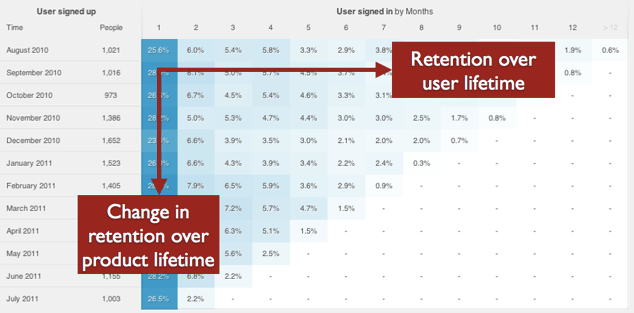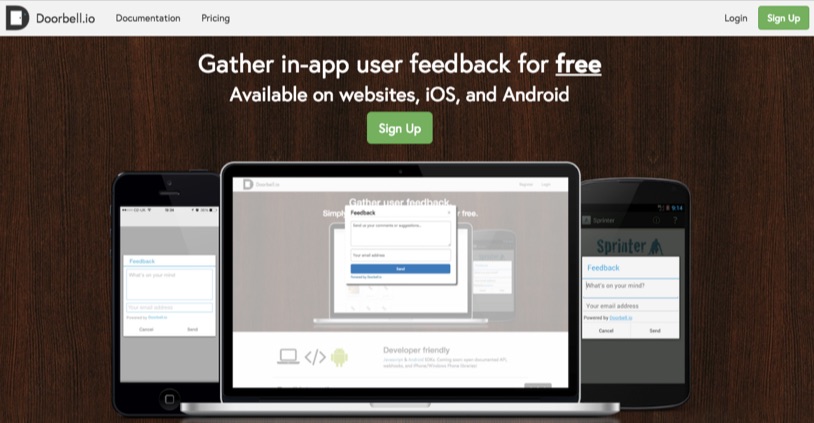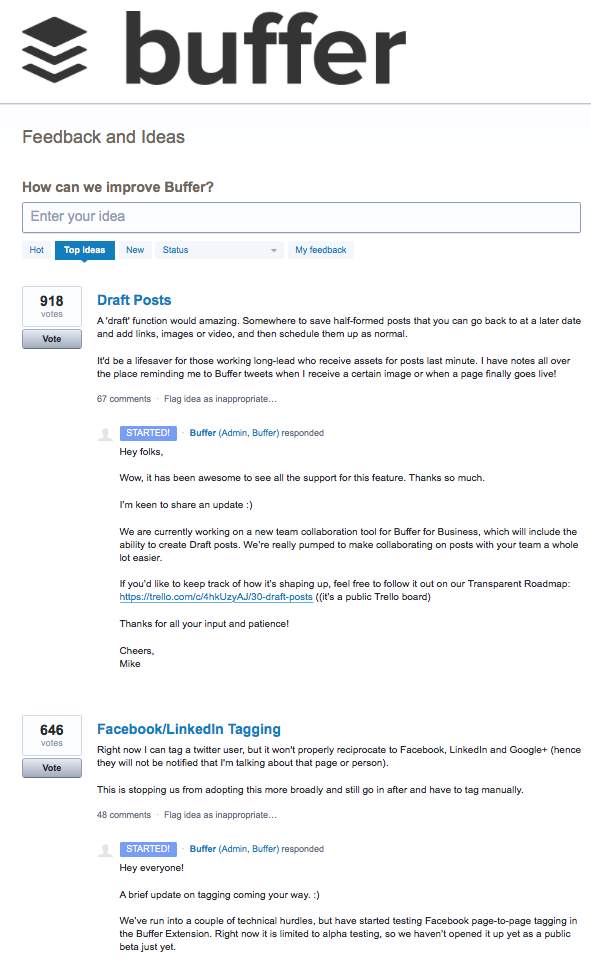
Why Customer Empowerment Is the Key to Great Retention Rates
It’s unfortunate, but inevitably, not all of your customers will continue doing business with you forever.
According to the most recent annual report from Recurly, the average quarterly customer churn rate among subscription services for physical goods is 10.6%, and digital service subscriptions don’t get much more loyalty love, with 8.2% as their average quarterly churn rates.
Yes, if you look, you can watch your best customers walk out your virtual door. But a lot of churn is preventable.
While you might be tempted to simply turn your back on fickle customers who won’t stay with your company anyway, consistent and scalable success demands that you take active measures to decrease churn and increase retention rates.
Only 28% of the small businesses surveyed by Belly, a loyalty program platform, said they plan to allocate the majority of their marketing budgets to customer retention. When you consider that even one negative customer experience can send people in search of your competitors, it becomes clear that businesses need to get their priorities straight.
In how many of the cases where you recently lost a customer could it have been prevented? Was there an action you could have taken – or not taken – to provide your customer with a more positive experience, one that would have satisfied him or her enough to stay with you?
The High Cost of Customer Churn
The most obvious cost of customer churn is the lost revenue from the lost customer herself. But the negative revenue impact is amplified when you compare it with the revenue potential of loyal, retained customers. Loyal customers tend to spend more money, more frequently. In fact, according to the aforementioned Belly study, 70% of merchants’ revenue comes from loyal customers.
Every customer you retain saves your business the cost of acquiring a new customer to replace him. And acquiring a new customer is five times more expensive than retaining an existing one.
Taking into account the cost-per-acquisition savings and the tendency of loyal customers to spend more than new customers, it’s not surprising to see that each percentage point increase in net retention increases enterprise value by 12% over five years, according to a report from SaaS Capital, a growth financing firm. Sure – onboarding new buyers is key for growth, but they just don’t have the power to drive compound growth like retention has. This is exactly why cohort analyses are so useful.
As if that weren’t enough, customer churn has even farther-reaching costs. Lincoln Murphy, a customer retention and churn mitigation specialist, points out that “When a customer churns, he also take some unquantifiable number of customers with him – those who won’t do business with you because of the negative market sentiment caused by all that churn.”
The key to retaining customers and mitigating churn is, of course, fostering experiences that empower your audience. You must leave them with positive emotions about what your product or service can do for them, their goals, their challenges, or their quality of life. That’s what inspired them to do business with you in the first place, isn’t it?
Customer empowerment can’t be improvised. It must be an in-depth, planned process involving steps both before and after they become your customers. Let’s look at some tactics for minimizing churn by maximizing a sense of customer empowerment throughout the customer lifecycle.
Only Take on Customers You Can Empower
To cultivate customer empowerment, you must be able to first identify the desired outcome. What do your customers want to be able to do? What is the pain point that your product remedies?
For example, if you provide an email marketing solution, you need to realize that your customer does not want to achieve the goal of “sending emails.” Your customer couldn’t care less about your product or service as is. They care about what they can get out of your product or service. Sending email campaigns is the means, not the end. The end can be “increase sales,” “increase traffic to the blog” or even “get recognized by superiors.”
Focus on what your customer wants to achieve by using your product.
Equally as important as what they want to achieve is, what do they want the experience to feel like? Two online merchants may want to sell more products through your email marketing system. One merchant, however, is not tech-savvy and wants a simple, smooth, seamless process. He doesn’t want to be confronted by the fact that he doesn’t know a whole lot about software. The other merchant is highly tech-savvy. She wants to be able to optimize her campaigns seven ways from Sunday. We’re talking A/B testing, multivariate testing, slice-and-dice analytics, CRM integration – the works.
The desired outcome (achievement and experience) will be starkly different for these two juxtaposing customer personas. Yet it’s crucial to identify the achievement and experience ideals for each of them. If you fail to do so effectively, you will inevitably fail to meet customer expectations. Even if your product or service helps them both achieve their goals, if the experience is lacking, they’ll feel negative and look elsewhere.
Identifying a customer’s desired outcome even before she becomes your customer enables you to avoid onboarding bad fits.
If you can’t meet a customer’s desires for achievement and experience, you’re better off not doing business with them in the first place. If you take them on anyway, you’re asking for them to churn and trail negative market sentiment in their wake.
With this in mind, be careful when using price differentiation and deep discounts as a major selling point in your messaging. Price has no connection to desired achievement, and it’s only indirectly connected to desired experience.
Empower Customers by Celebrating Wins
When your customers experience success with your product, you can cultivate a sense of empowerment by drawing their attention to that success. If you can highlight and emphasize the impact your offering has on their lives and goals, illustrating how your product has helped them get where they want to be, you will deepen the emotional connection between your customer and your product.
Kajabi, a platform for building and selling online courses and membership sites, takes this type of empowerment to impressive heights. Kajabi highlights success stories of regular users in its blog posts, complete with audio interviews and a special video section.
While elevating Kajabi users to the status of “Heroes,” and publicizing this achievement, is certainly effective social proof for acquiring new customers, the critical piece is that it creates a strong, emotionally empowering experience.
It emphasizes to them how much benefit they receive from the program, as it inspires them to continue using Kajabi to achieve even more. A customer who has been recognized publicly as a success has a much greater chance of staying a customer.
Empower Customers to Use Your Product Better
Customers who feel they’re stagnating with your product are going to up and leave, just to avoid the frustrating feeling of being stuck.
But customers who feel they are growing and making progress toward their goals are going to hold on to that experience.
Educational content demonstrating how to effectively use your product can give the quagmired customer that extra guidance on how to progress.

Educational content can take any number of formats: webinars, blogs, eBooks, or even quick instructional videos. Follow Venngage’s example; they published a step-by-step, illustrated blog post on creating an infographic. They delineate each action to be taken, while clearly showing their own role in the creation process. There’s no room left for doubt in the customer’s mind about how critical the tool is, or how to use it. The customer leaves the blog post empowered by actionable knowledge.
Or, check out SharpSpring’s blog post series on best practices for client onboarding. These articles clearly introduce the audience to the concept of onboarding experience optimization and continue on to detail exactly what SharpSpring’s product will be able to do for them in this regard.
Content for blog posts and social media is powerful for customer empowerment, but targeting customers according to their behavior, and alerting them as to recommended courses of action, can be even more effective. Signs that indicate possible “imminent churn” include decreases in product usage, failure to finish setting up accounts, or failure to utilize relevant features.
Adopting this line of thinking, HubSpot analyzed churn data to identify customers that were likely to leave, and proactively offered them help to minimize the possibility of churn.
This type of personalized, targeted interaction can be pushed through tools like Kissmetrics Campaigns – directly to the customer.
Empower Customers with Carefully Timed Upsells
Overpowering your audience with “buy me!” and “buy me too!” has the potential to be counterproductive. No one likes being stalked by an upsell. On the other hand, sometimes customers need a new feature in order to help them achieve their goals. If they don’t realize that your offering has a certain capability, they may move onto another product, even if they were happy with you up until this point.
If, however, you introduce your upgrade just when they truly need it, they’ll be thrilled: “I didn’t know you could do that, too!” That’s a major win. Customer retained.
It only works when you communicate the benefits of the rollout effectively, though. “You make sure it works perfectly, you pay attention to the usability and you communicate the value this feature brings to your services and accounts team,” BrightInfo CEO Boaz Grinvald tells Entrepreneur. “That’s how you minimize the gap between true and perceived value, or better yet, increase the perceived value.”
A word to the wise, though. With all your good intentions to help your customers (and avoid losing them), just don’t make it difficult for them to actually cancel when they want to. The right time for reaching out to offer help, guidance and educational content is when you sense there is a problem, but before they actually cancel. You should not be trying so hard to retain a customer that you reach a point where they are begging you to cancel or sending angry emoji-filled emails.
Empower Customers by Asking What They Need
How many unhappy customers actually complain… and how many just up and leave? Soliciting feedback enables you to fix problems before the customer hits the road. In-app feedback tools like Doorbell.io or Apptentive let you ask for user feedback easily and naturally.
Using net promoter score (NPS) queries to trigger smart automated workflows is also an option. It’s attractive because its brevity lowers the barrier to response, and its phraseology (“how likely are you to recommend” vs. “how satisfied are you”) garners a holistic, accurate measure of consumer satisfaction. But it’s not enough to just solicit feedback. You must respond to it – follow up with the unhappy customers to fix issues and build trust, and follow up with the happy customers to cement the relationship further.
Another client-keeping feature to integrate is a feature request option. Establishing a tool that provides users with the ability to tell you what’s missing from your product (always acknowledging their valued feedback, of course) proves that you are invested in their preferences.
Buffer uses Uservoice as a platform for users to submit new ideas to improve the product.
Even when it’s too late to get a churned customer back, obtaining feedback about why they left enables you to fix problems so they don’t occur with other clients. Help desk software Groove’s retention rates grew after implementing exit surveys and interviews. Soliciting feedback was so important to them that they kept tweaking their approach in order to get more responses. Their work paid off, both in the amount of feedback and in the number of retained customers.
Mission: Empowerment
Empower your customer to achieve their goals. Guide them on the path with targeted, inside information. Highlight their successes. Ask for their feedback and prove that it makes a difference.
By putting more power in the hands of your customers, you’ll keep them coming back for more.
About the Author: Nadav is a veteran online marketer and the Founder & CEO of InboundJunction, an Israel-based content marketing company. Nadav helps well-known brands in boosting their online visibility through PR, SEO and Social Media.










